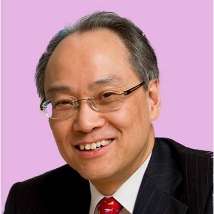Michael Francis is the go-to conductor to replace fellow maestros at short notice. The newly appointed Chief Conductor and Artistic Advisor to Norrköping Symphony Orchestra in Sweden stood in for Valery Gergiev with only 12 hours’ notice, and for John Adams with even less, in performances with the London Symphony Orchestra in 2007. Fortunately, his appearance with the Hong Kong Philharmonic on Friday was anything but under-rehearsed.
At the turn of the 20th century the Czech people in the Austro-Hungarian Empire were swept up in a wave of Slavic chauvinism. Leoš Janáček, a keen supporter of this trend, openly declared admiration for the Russian people. Taras Bulba, which Janáček called a “rhapsody for orchestra”, is centred around episodes in the life of a 17th-century Cossack leader and warrior, popularized in a novel by Nicholai Gogol.
A gentle three-way dialogue between cor anglais, violin and oboe opens the first movement, “Death of Andrei”, in which Tara Bulba’s younger son falls in love with the daughter of a Polish general and joins the enemy against his father. Some passionate playing on strings, interrupted by the death knell of bells, leads to a burst of noisy trombones as the armies clash. The love theme laments briefly as Andrei perishes in the hands of his father.
The second movement, “Death of Ostap”, is dominated by staccato strings in an unstoppable march that seems to seal the fate of Ostap as he falls into the hands of the enemy while grieving for his brother. Taras Bulba tries to rescue him in vain, as the clarinet utters his last cry. After sweeping strings and broad brass statements open up vistas to the vast expanse of the steppes, with the organ adding solemnity, “Prophecy and Death of Taras Bulba” finishes in a flurry of bells and brass, mourning the hero’s execution but hinting that his cause is not all lost. Although his conducting style is somewhat stiff and mechanical, Michael Francis handled the shifts of mood in Taras Bulba extremely well – the orchestral textures were transparent, and the drama was compelling.
Renowned violinist Anne-Sophie Mutter has visited Hong Kong before, but Friday was her first collaboration with the Hong Kong Philharmonic Orchestra. To open her part of the programme, she chose Time Machines, written for her by American composer Sebastian Currier. In his own words, the work explores, “the relationship between the perception of music and time”. Although the idea of this relationship may not be entirely new, the work is inventive, fresh and exhilarating.
My favourites were the first, fifth and final movements, respectively “Fragmented Time”, “Entropic Time” and “Harmonic Time”. A modernised version of The Flight of the Bumblebee, “Fragmented Time” opens with a rapid-fire series of notes followed by longer but equally pointed responses from the orchestra. The basis for “Entropic time”, according to the composer, is “the principle that ordered systems move towards greater disorder”. Many twists and turns in both the solo and orchestral parts traverse the landscape, sounding like a scherzo trying to break out of a time warp. The final movement, “Harmonic Time”, is lyrically alluring. A sense of foreboding envelops the beautiful melodies and harmonies moving in slow motion. Mutter was energetic but not forceful, treating the material at hand sensitively.
After the intermission, Mutter returned in Mendelssohn’s Violin Concerto in E minor, written for Ferdinand David, the concertmaster of the Leipzig Gewandhaus Orchestra. Aspects of the concerto’s inventiveness are well known – the soloist opening with the main theme before the orchestra picks it up, the cadenza being an integral part of the first movement, and there being no pauses between movements.
You would expect that a soloist with the stature of Anne-Sophie Mutter wouldn’t hesitate to use this concerto to flaunt her superb technical skills. On the contrary, her performance, while technically brilliant, excelled rather in musical expression. With her 1710 Stradvarius, she delivered a mellow and soothing tone, especially in the delicate whisper of the high notes, that showed a deep respect for the composer. Kurt Masur, for 26 years music director of the Leipzig Gewandhaus Orchestra, points to the similarity between the orchestral part of the Andante movement to the piano accompaniment in Mendelssohn’s Venetianisches Gondellieded (“Venetian Boat Songs”). Mutter’s phrasing in this movement was faithful to this inspiration, mirroring the voice of a gondolier.
In her debut with the Hong Kong Philharmonic, Anne-Sophie Mutter brought us an evening of unassuming but exquisite music-making, vindicating her status as a star, but above all as a superior musician who does not subjugate the composer’s intentions to her ego.


